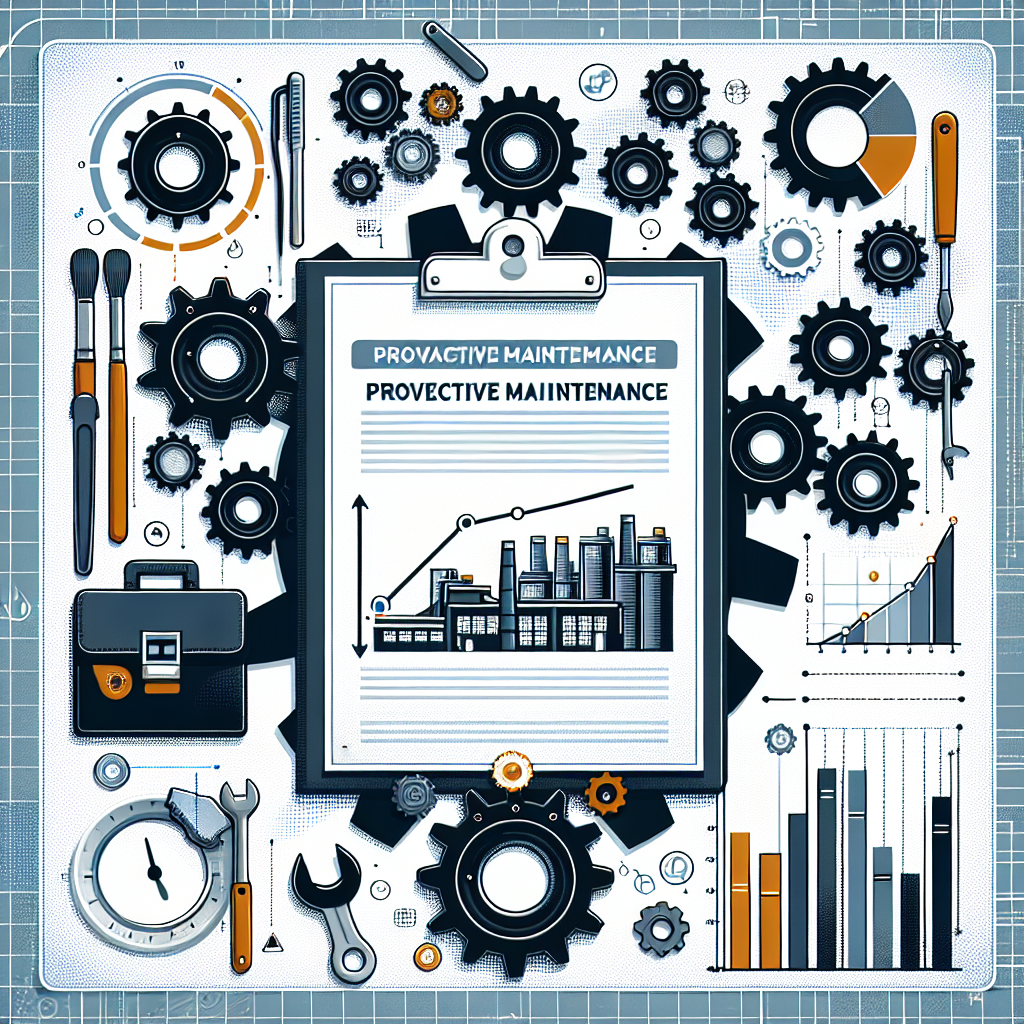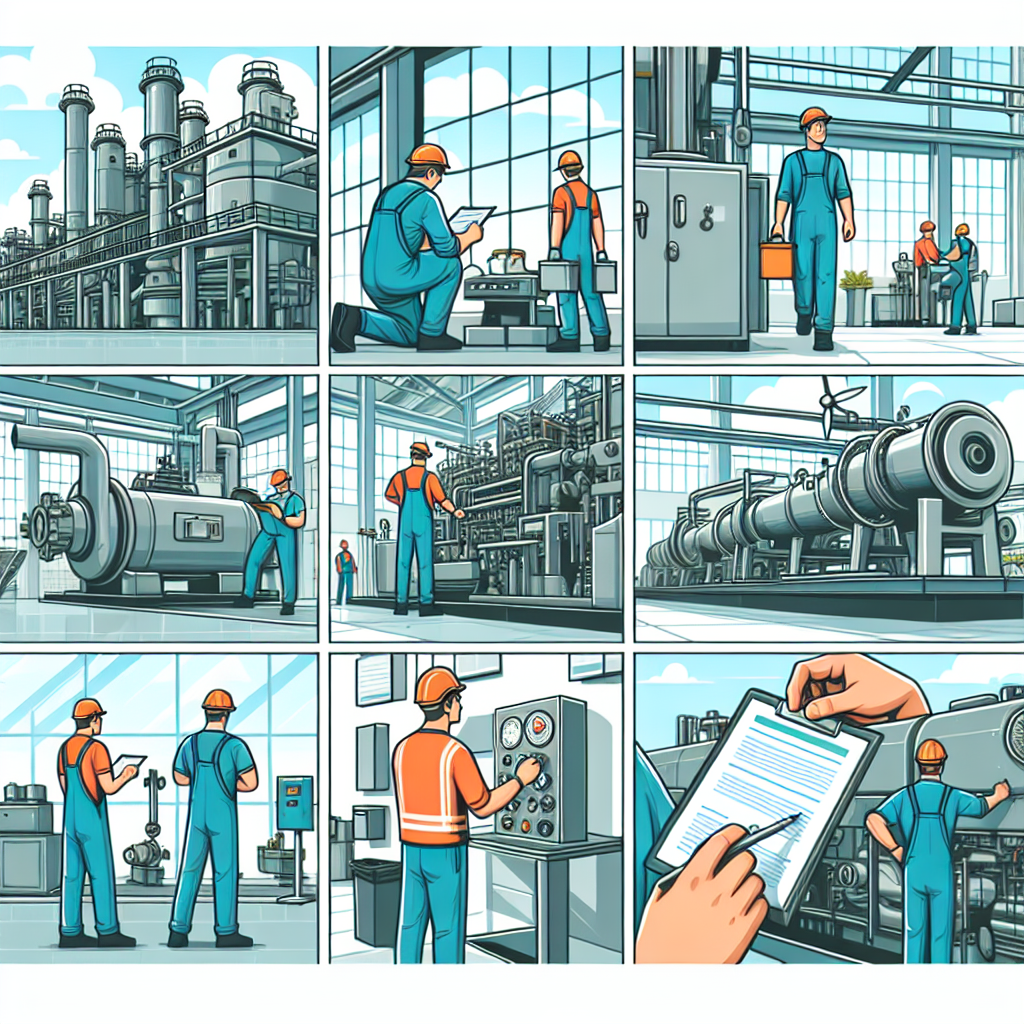Your cart is currently empty!
Tag: Maintenance

Key Strategies for Proactive Network Monitoring and Maintenance
In today’s fast-paced and interconnected world, network monitoring and maintenance are crucial for businesses to ensure smooth operations and prevent costly downtime. Proactive network monitoring involves continuously monitoring the performance and security of a network in real-time, in order to identify and address issues before they escalate into major problems. By implementing key strategies for proactive network monitoring and maintenance, businesses can optimize their network performance and minimize the risk of disruptions.One key strategy for proactive network monitoring is to establish a comprehensive monitoring system that covers all aspects of the network, including hardware, software, and security. This system should be able to track key performance indicators such as bandwidth utilization, latency, packet loss, and network traffic. By monitoring these metrics on a regular basis, businesses can identify potential bottlenecks or vulnerabilities and take proactive measures to address them before they impact network performance.
Another important strategy for proactive network monitoring is to implement automated alerts and notifications that can inform IT staff of any issues or anomalies in real-time. By setting up alerts for specific thresholds or events, businesses can quickly respond to potential problems and prevent them from escalating. Automated alerts can also help IT staff prioritize their efforts and focus on the most critical issues first.
Regular network maintenance is also essential for ensuring optimal performance and security. This includes performing routine tasks such as software updates, patch management, and hardware upgrades. By keeping the network infrastructure up-to-date, businesses can reduce the risk of security vulnerabilities and ensure that the network is running at peak efficiency.
In addition, businesses should regularly conduct network audits and assessments to identify potential areas for improvement. By analyzing network performance data and conducting periodic security assessments, businesses can identify weaknesses in their network infrastructure and take proactive steps to address them. This can help prevent security breaches and ensure that the network is able to support the needs of the business.
Overall, proactive network monitoring and maintenance are essential for businesses to ensure the reliability, security, and performance of their network infrastructure. By implementing key strategies such as comprehensive monitoring systems, automated alerts, regular maintenance, and network assessments, businesses can proactively manage their network and minimize the risk of downtime. Investing in proactive network monitoring and maintenance can pay off in the long run by helping businesses avoid costly disruptions and maintain a competitive edge in today’s digital landscape.

Maximizing Efficiency: The Role of Proactive Maintenance in Industrial Settings
In today’s fast-paced industrial environments, maximizing efficiency is crucial to staying competitive and profitable. One key factor in achieving this goal is proactive maintenance. Proactive maintenance involves identifying and addressing potential issues before they escalate into costly downtime or equipment failure. By implementing a proactive maintenance strategy, industrial settings can improve overall productivity, reduce maintenance costs, and extend the lifespan of equipment.One of the main advantages of proactive maintenance is that it helps prevent unexpected breakdowns. By regularly monitoring equipment and conducting routine inspections, maintenance teams can identify potential issues early on and address them before they escalate. This not only helps avoid costly repairs but also minimizes downtime, keeping operations running smoothly and efficiently.
Proactive maintenance also helps extend the lifespan of equipment. By regularly cleaning, lubricating, and repairing machinery, maintenance teams can ensure that equipment remains in optimal working condition. This not only reduces the need for costly replacements but also helps maintain consistent performance levels, leading to improved overall efficiency.
Additionally, proactive maintenance can help identify opportunities for process improvements. By closely monitoring equipment performance and identifying potential bottlenecks, maintenance teams can make recommendations for optimizing workflows and increasing productivity. This holistic approach to maintenance can lead to significant efficiency gains and cost savings in the long run.
To successfully implement a proactive maintenance strategy, industrial settings should invest in modern maintenance management software and tools. These tools can help streamline maintenance workflows, track equipment performance, and schedule preventative maintenance tasks. By leveraging technology, maintenance teams can proactively address issues, prioritize maintenance tasks, and improve overall efficiency.
In conclusion, proactive maintenance plays a crucial role in maximizing efficiency in industrial settings. By identifying and addressing potential issues before they escalate, maintenance teams can prevent unexpected breakdowns, extend the lifespan of equipment, and identify opportunities for process improvements. By investing in modern maintenance management software and tools, industrial settings can optimize their maintenance workflows and achieve peak efficiency in their operations.

Remote Monitoring: The Key to Proactive Maintenance
Remote monitoring is a crucial tool in the world of maintenance, allowing businesses to stay ahead of potential issues and prevent costly downtime. By utilizing remote monitoring technology, companies can track the performance of their equipment in real-time, identify potential problems before they escalate, and take proactive measures to address them.One of the key benefits of remote monitoring is its ability to provide businesses with a comprehensive overview of their assets. By collecting data on equipment performance, maintenance needs, and usage patterns, companies can gain valuable insights into the health of their operations. This data can help businesses identify trends and patterns that may indicate potential issues, allowing them to address problems before they lead to costly breakdowns.
In addition to providing real-time data on equipment performance, remote monitoring also allows businesses to set up alerts and notifications for specific thresholds or conditions. This means that maintenance teams can be alerted to potential issues as soon as they arise, enabling them to take immediate action to prevent further damage or downtime. By being proactive in their maintenance approach, companies can save time and money in the long run by avoiding costly repairs and unplanned downtime.
Remote monitoring also enables businesses to conduct predictive maintenance, a proactive maintenance strategy that involves using data and analytics to predict when equipment is likely to fail. By analyzing historical data and performance trends, companies can identify patterns that may indicate impending issues, allowing them to schedule maintenance at optimal times and avoid unexpected breakdowns. This not only helps to extend the lifespan of equipment but also improves overall operational efficiency.
Overall, remote monitoring is the key to proactive maintenance in today’s fast-paced business environment. By leveraging real-time data, alerts, and predictive analytics, businesses can stay ahead of potential issues, prevent costly downtime, and ensure the smooth operation of their equipment. Investing in remote monitoring technology is a smart choice for any business looking to optimize their maintenance processes and maximize the lifespan of their assets.

Why Proactive Maintenance is Essential for Preventing Costly Downtime
Proactive maintenance is an essential practice for businesses looking to prevent costly downtime and maintain the efficiency of their operations. By implementing a proactive maintenance strategy, businesses can identify and address potential issues before they escalate into major problems that result in downtime and expensive repairs.One of the key benefits of proactive maintenance is that it helps businesses avoid unexpected breakdowns and disruptions to their operations. By regularly inspecting and maintaining equipment, businesses can identify and address any issues before they cause a breakdown. This not only helps to prevent costly downtime, but also ensures that equipment is operating at optimal levels, resulting in increased efficiency and productivity.
Additionally, proactive maintenance can help businesses extend the lifespan of their equipment. By regularly servicing and maintaining equipment, businesses can prevent wear and tear, prolonging the lifespan of their assets and avoiding the need for costly replacements. This can result in significant cost savings in the long run, as businesses can avoid the expenses associated with purchasing new equipment.
Furthermore, proactive maintenance can help businesses identify and address potential safety hazards before they pose a risk to employees or the environment. By regularly inspecting equipment and ensuring that it is in good working condition, businesses can create a safer work environment and reduce the likelihood of accidents or injuries.
In conclusion, proactive maintenance is essential for businesses looking to prevent costly downtime and maintain the efficiency of their operations. By implementing a proactive maintenance strategy, businesses can avoid unexpected breakdowns, extend the lifespan of their equipment, and create a safer work environment for their employees. Ultimately, proactive maintenance is a smart investment that can help businesses save money, increase productivity, and ensure the smooth operation of their operations.

Proactive Maintenance: Investing in the Long-Term Health of Your Equipment
Proactive Maintenance: Investing in the Long-Term Health of Your EquipmentIn today’s fast-paced business world, it can be easy to overlook the importance of properly maintaining your equipment. However, investing in proactive maintenance can actually save you time and money in the long run by preventing costly breakdowns and extending the lifespan of your equipment.
Proactive maintenance involves regularly inspecting and servicing your equipment before any issues arise. This can include tasks such as lubricating moving parts, replacing worn-out components, and cleaning filters. By staying ahead of potential problems, you can avoid unexpected downtime and keep your operations running smoothly.
One of the key benefits of proactive maintenance is that it can help you identify and address small issues before they escalate into major problems. For example, a small leak in a hydraulic system may seem insignificant at first, but if left unchecked, it can lead to a catastrophic failure that could result in extensive repairs and lost productivity. By catching and repairing issues early on, you can prevent more serious damage and keep your equipment in optimal working condition.
In addition to preventing breakdowns, proactive maintenance can also help you optimize the performance of your equipment. By regularly tuning and calibrating your machines, you can ensure that they are operating at peak efficiency, which can lead to improved productivity and lower operating costs. For example, a well-maintained HVAC system will consume less energy and provide better comfort for building occupants compared to a neglected system that is struggling to keep up with demand.
Furthermore, investing in proactive maintenance can help you extend the lifespan of your equipment. By taking care of your machines and following manufacturer recommendations for maintenance schedules, you can ensure that your equipment continues to operate reliably for years to come. This can help you avoid the need for premature replacements and reduce your overall capital expenditures.
Ultimately, proactive maintenance is a smart investment that can pay off in the long run. By prioritizing the health of your equipment and staying on top of maintenance tasks, you can prevent costly breakdowns, optimize performance, and extend the lifespan of your assets. So, don’t wait until something goes wrong – take proactive steps to keep your equipment in top condition and reap the benefits of a well-maintained fleet.

The Future of Maintenance: How Proactive Strategies are Changing the Game
Maintenance has traditionally been a reactive process – waiting for equipment to break down before fixing it. This approach has its drawbacks, including costly repairs, downtime, and reduced efficiency. However, with advancements in technology and the rise of predictive maintenance strategies, the future of maintenance is shifting towards a more proactive approach.Predictive maintenance uses data and analytics to predict when equipment is likely to fail, allowing maintenance teams to address issues before they become serious problems. This not only reduces downtime and costly repairs but also extends the lifespan of equipment and improves overall efficiency.
One of the key technologies driving this shift is the Internet of Things (IoT). IoT devices can collect real-time data on equipment performance, allowing maintenance teams to monitor it remotely and identify potential issues before they escalate. This data can also be used to optimize maintenance schedules and predict when maintenance is needed, reducing downtime and streamlining operations.
Another technology that is revolutionizing maintenance is artificial intelligence (AI). AI algorithms can analyze vast amounts of data to identify patterns and predict when equipment is likely to fail. This allows maintenance teams to prioritize their efforts and focus on the most critical issues, further reducing downtime and costs.
Overall, the future of maintenance is moving towards a more proactive, data-driven approach. By leveraging technologies like IoT and AI, maintenance teams can anticipate and prevent issues before they occur, saving time and money while improving overall efficiency. As these technologies continue to advance, the game of maintenance is set to change dramatically in the coming years.

Maximizing Efficiency with a Proactive Maintenance Program
In any industry, maximizing efficiency is crucial to success. One way to achieve this is through implementing a proactive maintenance program. By staying ahead of potential problems and addressing them before they escalate, businesses can save time, money, and resources in the long run.A proactive maintenance program involves regularly scheduled inspections, maintenance, and repairs to ensure that equipment and machinery are operating at peak performance levels. This preventative approach helps to identify potential issues early on, preventing costly breakdowns and downtime.
There are several key benefits to implementing a proactive maintenance program. Firstly, it can help to extend the lifespan of equipment and machinery. By addressing minor issues before they turn into major problems, businesses can avoid costly repairs or replacements and keep their assets in optimal condition for longer.
Secondly, proactive maintenance can help to improve overall efficiency and productivity. By keeping equipment in good working order, businesses can minimize downtime and ensure that operations run smoothly and efficiently. This can lead to increased output, reduced waste, and improved profitability.
Additionally, a proactive maintenance program can help to enhance workplace safety. By regularly inspecting and maintaining equipment, businesses can identify and address potential safety hazards before they cause harm to employees or property. This can help to create a safer work environment and reduce the risk of accidents and injuries.
To effectively implement a proactive maintenance program, businesses should establish a schedule for regular inspections and maintenance tasks. This may involve creating checklists, assigning responsibilities to specific team members, and documenting maintenance activities for future reference.
It’s also important to invest in the necessary resources and tools to support the maintenance program, such as equipment monitoring systems, spare parts inventory, and training for maintenance staff. By having the right resources in place, businesses can ensure that their proactive maintenance program is successful and sustainable in the long term.
Overall, maximizing efficiency with a proactive maintenance program can have a significant impact on a business’s bottom line. By preventing costly breakdowns, improving productivity, and enhancing workplace safety, businesses can achieve greater success and competitiveness in their industry. Investing in a proactive maintenance program is a smart decision that can pay off in the long run.

Proactive Maintenance Best Practices: A Guide for Facility Managers
As a facility manager, ensuring that your building’s equipment and systems are well-maintained is crucial for the smooth operation of your facility. Proactive maintenance is key to preventing costly breakdowns and ensuring that everything is running efficiently. In this guide, we will discuss the best practices for proactive maintenance that facility managers should follow.1. Develop a Maintenance Plan: The first step in proactive maintenance is to develop a comprehensive maintenance plan for your facility. This plan should outline all the equipment and systems that need regular maintenance, as well as the frequency of maintenance tasks. By having a detailed plan in place, you can ensure that all necessary maintenance tasks are being carried out on time.
2. Conduct Regular Inspections: Regular inspections are essential for identifying any potential issues before they escalate into more significant problems. Facility managers should schedule regular inspections of all equipment and systems to check for signs of wear and tear, leaks, or other issues. By catching problems early, you can prevent costly repairs and downtime.
3. Implement Preventive Maintenance: In addition to regular inspections, facility managers should also implement preventive maintenance tasks to keep equipment and systems running smoothly. This includes tasks such as lubricating moving parts, replacing filters, and checking fluid levels. By staying on top of preventive maintenance tasks, you can extend the life of your equipment and reduce the risk of unexpected breakdowns.
4. Train Staff: Properly trained staff are essential for proactive maintenance. Facility managers should ensure that their maintenance staff is well-trained in the proper maintenance procedures for all equipment and systems in the facility. By investing in training, you can ensure that maintenance tasks are performed correctly and efficiently.
5. Use Technology: Technology can be a valuable tool for proactive maintenance. Facility managers can use software programs to track maintenance schedules, generate work orders, and keep detailed maintenance records. Additionally, sensors and monitoring systems can be used to track equipment performance in real-time and alert facility managers to any issues that may arise.
6. Prioritize Safety: Safety should always be a top priority when performing maintenance tasks. Facility managers should ensure that all maintenance staff are following proper safety protocols and using the necessary personal protective equipment. By prioritizing safety, you can prevent accidents and injuries during maintenance activities.
In conclusion, proactive maintenance is essential for facility managers to keep their buildings running smoothly and efficiently. By developing a comprehensive maintenance plan, conducting regular inspections, implementing preventive maintenance tasks, training staff, using technology, and prioritizing safety, facility managers can ensure that their facility is well-maintained and operating at its best. By following these best practices, facility managers can prevent costly breakdowns, extend the life of their equipment, and ensure the safety of their staff and occupants.

Why Proactive Maintenance is Essential for Ensuring Safety in the Workplace
In any workplace, safety should always be a top priority. Ensuring a safe working environment not only protects employees from harm, but also contributes to a more productive and efficient work environment. One key aspect of maintaining workplace safety is through proactive maintenance.Proactive maintenance involves regularly inspecting, repairing, and maintaining equipment, machinery, and facilities before any issues arise. This proactive approach to maintenance helps to prevent accidents, breakdowns, and other safety hazards in the workplace.
One of the main reasons why proactive maintenance is essential for ensuring safety in the workplace is that it helps to identify and address potential safety risks before they become serious problems. By regularly inspecting and maintaining equipment and machinery, employers can identify any issues that could lead to accidents or injuries, and take corrective action to prevent them from occurring.
In addition, proactive maintenance helps to ensure that equipment and machinery are operating at their optimal level of performance. Regular maintenance can help to extend the lifespan of equipment, reduce the risk of breakdowns, and improve overall efficiency. This not only helps to prevent accidents and injuries, but also helps to maintain a safe and productive work environment.
Furthermore, proactive maintenance can also help to ensure compliance with safety regulations and standards. By regularly inspecting and maintaining equipment and facilities, employers can ensure that they are meeting all necessary safety requirements and standards. This can help to prevent costly fines and penalties, as well as protect the well-being of employees.
Overall, proactive maintenance is essential for ensuring safety in the workplace. By taking a proactive approach to maintenance, employers can identify and address potential safety risks, ensure optimal performance of equipment and machinery, and maintain compliance with safety regulations. By prioritizing safety through proactive maintenance, employers can create a safe and productive work environment for all employees.

Proactive Maintenance: The Secret to Maintaining Peak Performance in Your Facility
In today’s fast-paced world, facility managers are constantly under pressure to ensure that their buildings are operating at peak performance. This can be a daunting task, especially when faced with aging infrastructure, limited resources, and increasing demands from tenants and stakeholders. However, there is a solution to this challenge – proactive maintenance.Proactive maintenance is a preventative approach to facility management that focuses on identifying and addressing potential issues before they become major problems. By implementing a proactive maintenance program, facility managers can significantly reduce downtime, extend the lifespan of equipment, and ultimately save time and money in the long run.
One of the key benefits of proactive maintenance is that it allows facility managers to schedule maintenance tasks at convenient times, rather than waiting for a breakdown to occur. This not only minimizes disruptions to building operations but also helps to avoid costly emergency repairs. By staying ahead of maintenance issues, facility managers can ensure that their buildings are always running smoothly and efficiently.
Another advantage of proactive maintenance is that it can help to improve the overall safety and security of a facility. By regularly inspecting equipment and systems, facility managers can identify potential hazards and address them before they pose a risk to occupants. This proactive approach can prevent accidents and injuries, as well as protect the reputation of the facility.
In addition to improving operational efficiency and safety, proactive maintenance can also have a positive impact on the environment. By keeping equipment well-maintained and running efficiently, facility managers can reduce energy consumption and minimize waste. This not only helps to lower operating costs but also demonstrates a commitment to sustainability and corporate responsibility.
To implement a successful proactive maintenance program, facility managers should start by conducting a thorough assessment of their building’s systems and equipment. By identifying potential areas of concern and developing a comprehensive maintenance plan, facility managers can prioritize tasks and allocate resources effectively. Regular inspections and routine maintenance checks should be scheduled to ensure that equipment is functioning properly and to address any issues before they escalate.
By embracing proactive maintenance, facility managers can take control of their building’s performance and ensure that it operates at peak efficiency. With a proactive approach to maintenance, facilities can minimize downtime, reduce costs, and create a safe and sustainable environment for occupants. Investing in proactive maintenance is not only a smart business decision but also a key strategy for long-term success in facility management.
